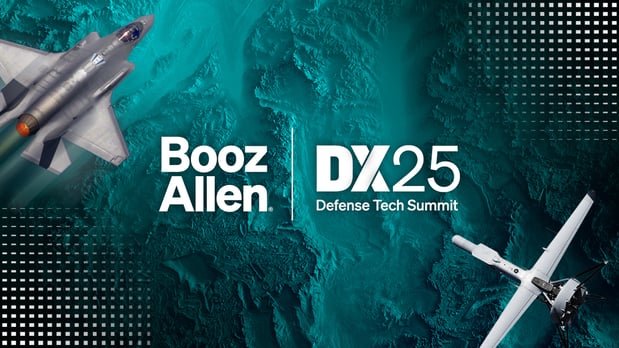This past month, I had the honor of moderating the “Achieve Information Dominance: Counter Gray Zone Warfare Through Unifying Data” discussion with an esteemed panel of top defense leaders. We discussed the challenges and priorities encompassing Joint All-Domain Command and Control (JADC2) efforts in the context of gray zone warfare.
As cyber threats, espionage, trade coercion, and political meddling proliferate, the United States must mount a secure defense against gray zone warfare. Adversaries like China and Russia have new capabilities in artificial intelligence (AI), data labeling, quantum computing, and cyber attacking, all of which can be used to launch complex attacks. To keep pace, the Department of Defense (DOD) should embrace modular, open technology and commercial advancements.
A central point of the panel discussion was the role of data and industry technology in hybrid warfare strategies. The main question we aimed to answer was this: As the United States moves forward into the next frontier of gray zone warfare, how does the nation maintain information advantage and ensure the successful integration of data and technology within the JADC2 framework?
- Embrace Industry Advancements: The truth is, industry partners provide the military with incredible commercial off-the-shelf (COTS) technology. This partnership can help DOD bring the latest and greatest advancements into its own systems and develop shared solutions for capability gaps. However, unlike the commercial world, the military environment is constantly in flux. So how does DOD adapt and govern COTS technology for use in differing, ever-changing military environments? First, DOD needs to move toward an open architecture approach to ensure interoperability and provide a set of standard APIs so that industry can understand how to align new technology with existing standards. An example of this in action is the Open Mission Systems standard, which divides mission systems into interfaces and standards that are transparent, government-owned, and that industry can build against.
- Provide “Digital Kits” for Warfighters: Like a Modification Table of Organizational Equipment (MTOE), warfighters need a “packing list” or “digital kit” with the most essential mission data and technology. Digital kits should include tailored data and memory based on mission needs for fast decisions, AI-driven insight, and advanced cybersecurity for sensitive data. They should enhance communications and lighten the physical and mental strains of battle. Establishing digital kits will enhance mission readiness in the same way that smartphones improve day-to-day civilian life.
- Modernize Command-and-Control Systems: DOD systems aren’t currently optimized for a multi-domain operations/near-peer engagement—many times they’re air gapped, and there’s no way through a network to exchange data. There are definite improvements DOD can make to ensure these systems are better prepared for this type of conflict in the future. DOD should look to operationalize commercial technology to help modernize the current battle management command-and-control architecture.
- Adopt a Data-Centric and Transport-Agnostic Vision to Network the Force: One of the biggest challenges we discussed is figuring out how new and existing technologies can support a data-centric, transport-agnostic vision with a modern security architecture. Moving from a network-centric to data-centric approach will allow DOD to keep users on the same network but ensure they’re only able to view data that’s tagged for their level of clearance. This will mean greater interoperability across DOD and its partners to further capitalize on technologies like AI, edge computing, and data fusion.
- Achieve Consistency Without Over-Standardization: Standards need to be set for metadata labeling, while at the same time making sure not to over-standardize. When these standards are set, it's important to be cautious about not being overly burdensome or prescriptive. Instead, set basic minimum standards that can help the services apply data security and ensure a basic level of consistency throughout the joint force, without inhibiting initiative and agile development.
- Balance Security and Open-Source Tools: Open-source tools will greatly aid success—they’re cutting-edge, incorporating expertise from top commercial innovation, and provide DOD with the latest and greatest advancements. However, when using these tools, be conscious of the security risks and make sure they behave on the network in a manner to ensure security (or that offers a means of securing the tools if need be). Implementing zero trust policies, a model in which users are assigned the least access necessary to perform specific tasks, will make it much easier to put these safeguards in place.
To maintain information advantage, DOD must adopt a new approach to integrating and fusing data for military operations and be able to effectively leverage industry advancements and cloud, AI, and open-source technology—only then will DOD be ready for the next frontier of gray zone warfare.




